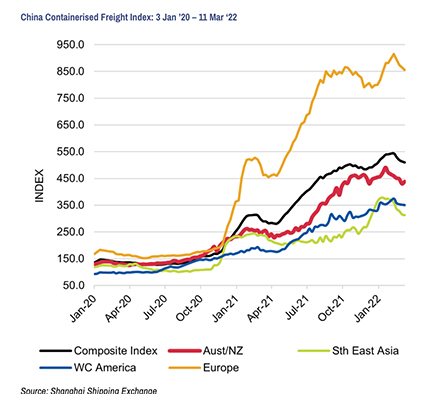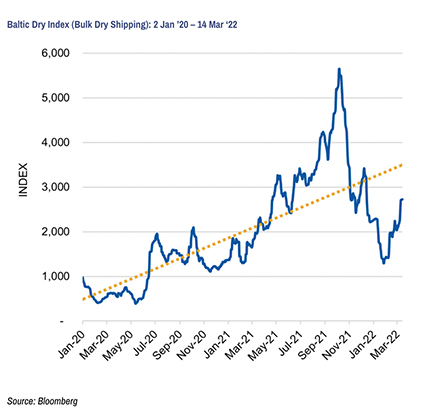Global shipping attention has swung to Russia’s invasion of Ukraine, with one of the world’s largest food producers potentially falling under the control of Russia’s President Putin and his cohort of allies. Source: IndustryEdge
While the real tragedy is in the Ukraine, the follow on includes the capacity of Ukraine to continue its role as a food bowl for the world – it is a massive net exporter of grains and other agricultural products grown on its fertile soils.
A global food shortage would compound the disasters of the pandemic and the horrors of this war.
In that context, we can briefly examine the unfolding situation.
Growing global sanctions targeting Russian energy resources are already feeding into sharply higher fuel and operating costs that will continue to spiral upwards.
Major shipping lines have suspended bookings from Russia, reportedly with the exception of food and medical supplies. The only major line not to have ceased taking new bookings is China’s COSCO.
Windward, a shipping industry AI platform, advised that around 2,000 of the world’s 44,000 cargo and tanker vessels are owned by Russian registered companies. The risk of them being sanctioned out of action on most routes is growing. The UK, Canada and several other countries have already banned Russian owned ships from their ports.
Reportedly, there are many ships caught in the main Ukrainian ports, with vessels appearing to divert to the South, to Romanian ports like Constanza.
Our review of the vessel tracking systems to which we subscribe confirms that is the case. It is not clear whether this is safe-haven or if vessels will collect goods being freighted by road and rail from Ukraine.
It now seems likely that most shipping ex-Eastern Europe will include War Risk Surcharges that are likely to be around USD50/TEU. Compared with the already enormous cost increases of the last two years, that seems mild, but does compound what are already oppressive costs.
Overall, the simple point must be that shipping and freight costs will increase again – and dramatically – over coming months. That will place supply chains under pressure and will contribute to significant inflation. That is already baked into global economies.
China Consolidated Freight Index (CCFI)
The China Consolidated Freight Index (CCFI) shows the cost of shipping finished goods from China around the world continues to increase. Importantly, this is not merely a Chinese phenomenon, but the CCFI represents more container movements than any other index, so gives a fair indication of absolute shipping costs.
Over 2021, the weighted average cost of containerised freight doubled. Since the start of 2022, the weighted average cost in-crease was less than 1% to mid-March.
However, this cost hiatus appears set to end, in particular for shipments ex-Europe. Russia’s war on Ukraine will disrupt all aspects of trade in any event. Moreover, sanctions on Russian energy products are already launching fuel prices into the stratosphere. That will have an enormous impact on shipping costs, where fuel is the largest input.
This is not yet observable in the freight price indexes, but soon will be.
In mid-March, the Baltic Dry Index (BDI), the main indices of raw materials shipping costs, was 23% higher than recorded at the end of 2022. Through January and into February the weighted cost of bulk commodity shipping had moderated somewhat. There were prospects of some stability over the coming months.
What a difference a war makes.
The BDI is prone to very immediate swings, based on the moving cost of shipping, including the ever-present costs of oil and other energy products, as much as anything else. All commentators expect to see the cost of bulk commodity shipping increase dramatically in coming months, fanning the al-ready furious inflationary fires underway in the global economy.
For more information visit: www.industryedge.com.au







